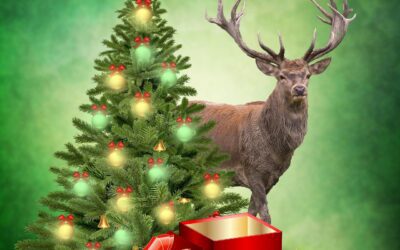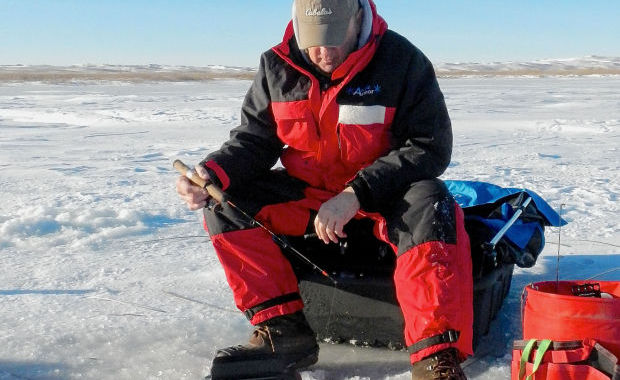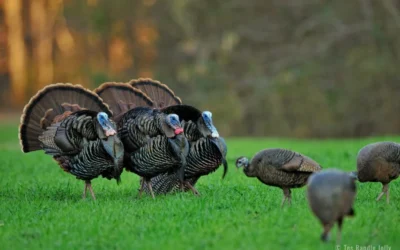Can you feel it? Can’t you see it? It is in the air, the cool brisk temperatures and the breeze that will soon bring the cold weather into our area.
My hunting dog, “Mo” knew it was here; he had a little more bounce in his step when I let him out for his run last night!
He came out of the kennel on a dead run, his nose to the ground, tail high in the air and after two or three laps around the yard, ran to the back of the pickup thinking that it was time to go hunting.
You did not need to look at a calendar to know that fall would arrive this week. You could feel it!
With the arrival of fall outdoorsmen and women, know that hunting seasons have begun.
The sharptail grouse/prairie chicken season opened in South Dakota September 19 running through January 3 and in Nebraska January 1 through December 31.
Hunters in South Dakota who hope to bag a prairie chicken would do best to hunt the south-central part of the state as they are found mixed with sharptails east of the Missouri River and west of the Missouri from Haakon and Stanley counties south to the Missouri River.
You will find scattered coveys of grouse on public lands east of the Missouri, with the best hunting being found farther west. In eastern South Dakota, sharptails are present but not as abundant as in the western part of the state.
The daily bag limit is 3 in any combination with a possession limit of 15 that need to be taken over a five-day period.
The Nebraska Game & Parks lek counts are similar to those of last year, where grouse hunters in the Cornhusker State enjoyed good to excellent success last season
Grassland conditions have improved significantly through western Nebraska, which could translate into good nesting and perhaps improve numbers of grouse.
In Nebraska, the larger populations of grouse can be found in the western part of the state, with good populations being found from O’Neill west.
West of Highway 81 the daily grouse limit in Nebraska is 3 with a possession limit of 12 birds. Hunters west of Highway 81 need only their upland game permit and habitat stamp to hunt grouse.
East of Highway 81 grouse hunters are required to have the upland game permit, habitat stamp and a special permit that can be obtained through the Game & Parks.
For those of you that do not have a whole lot of experience hunting grouse, you will need to know that these birds are a lot different from other game birds.
Unlike their cousins, the pheasant and quail inhabiting the heavy cover found in eastern Nebraska, the grouse is a creature of the prairie.
Like most other wildlife that lives on the prairie, they depend on their eyesight for safety.
Grouse will be found in areas where they can danger coming from a long distances. At times it will be an area with thinnest cover as this gives them the ability to spot danger at a distance.
Since they inhabit the prairie, where it seems like its always windy, look for grouse on the downwind side of a ridge or hill.
Grouse will move into thick cover to get out of the sun and I have found them nestled under a cedar tree on very warm sunny days.
If you are hunting on a day that is very warm, especially during the early season, look for them around stock tanks, ponds or any location where they might easily find water.
The edges of irrigated alfalfa fields are also a good spot to look for grouse as the alfalfa is a good food source for the birds and the irrigation systems wheel tracks generally hold enough water to quench the grouses thirst.
I have found that a good way to locate grouse is by carefully looking a field over before hunting it with my field glasses, as grouse will usually have a sentry or two with their head protruding above the grass watching for danger.
As a friend of mine once said, “what you want to look for are the sentries. They always have one or two keeping an eye on things, so look for something out there that resembles the top of a bowling pin as the sentry grouse’s long neck will be protruding above the cover.”
You will not need a heavy game load to hunt grouse as a 7 ½ shot works well during the early season. Early season birds will set longer before flushing, as many of the birds are the young of the year.
Later on in the season, once the birds have been pressured, 6 shot gives you a little more knock down power at longer range as the birds are more apt to flush wild.
Hunting grouse can be demanding because long walks are common unless you spot the birds before you go after them.
Once grouse have flushed, it is not uncommon for them to pump and glide into the next section or even several sections away before landing. This is especially true during the late season.
When hunting grouse or any gamebird during warm weather with dogs, you need to be sure that you bring along lots of water for both yourself and the dog.
If it is warm, I carry a sports squeeze bottle in my vest and water the dog whenever he looks like he is getting hot.
If you like dark meat, then grouse will be right up your alley. It tends to be a bit dry if over cooked, so it is best when cooked to what I call medium rare.
Grouse hunting is a great way to get out into the states prairies and grasslands to hunt prior to the pheasant opener.
It is also an excellent way to get yourself and your dog in shape for your next hunt.






0 Comments